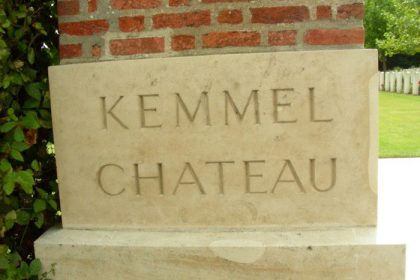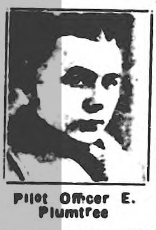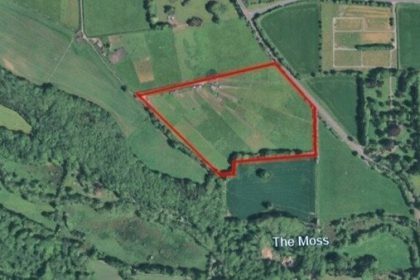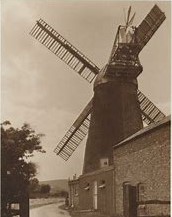Field names from the 1798 Enclosure Map and other documents with meanings where known.
Meanings are taken from K. Cameron’s Derbyshire Place-names, John Field’s Dictionary of English Field Names and Eckwall’s Dictionary of English Place Names.
Ash Field (cf. Deepwell alias Ashes 1604): land near or containing ash trees
Bad Slack, Badslacke 1684: land in a valley, probably literal expression of a regrettable fact
Bank: land on or by an embankment
Banner Ridding
Barn Croft: land by, or containing a barn
Beighton Hill Close (cf. Beighton Hill Close 1649, being named from Beighton)
Bents, (cf. the Bents 1701): land on which bent grass grew
Billam Croft (cf. Samuel Billam 1718), possibly land owned by John Billam, 1624.
Bolehill Banks
Booths Close (cf. William Booth 1663)
Bower Close (cf. Robert Bower 1570)
Bradbury Close, Bradbury Close 1710; possibly land owned by James Bradbury 1649.
Bridge Meadow (cf. Brigge Greene 1570): land by a bridge
Broom Close, Broom Field, Broom Croft, Broom Hills, (le Broom Close 1717, Brome Closes 1584, the Broom feilds, 1649): broom-covered field.
Bunting Close (cf. Francis Bunting 1657)
Busks
Calf Close (Calfe Close 1634), land on which calves were kept
Charlesworth Close (cf. Edward Charlesworth 1723)
Coalpit Close (cf. Coalpitt Banke 1669), land by a colliery
Crabtree Close (le Crabtree Close 1720), land near, or containing, crab-apple trees
Cross Style Close
Dod’s Lane Piece, Dodworth Croft: probably a transferred name from Samuel Dodworth, 1701.
Dove Cote Field, land containing or adjoining a dove-cote
Fox Hag, (Foxhage 1649), a place cleared of trees or a place where holly was cultivated and where foxes were common.
Furnace Croft, land near a smelting furnace
Gawtrice Close, site of a gallows
Gin Bank: field where there was an engine or farm machinery
Great Spring, land adjoining or containing a wood
Hall Platts, land attached to the hall, property of the lord of the manor
Hallam Sick Close, possibly land owned by Daniel Hallam, 1717, beside a small stream, dyke or ditch.
Hanging Lee Hangyngley 1570, land on a steep slope
Haw Leys, enclosed meadow, untilled land
High Field (High Field 1702): cleared land in a high position relative to the parish as a whole or more elevated than a second field bearing a corresponding name (e.g. Low Field)
Holme Meadow (cf. Holme 1570, 1604), water meadow, riverside land, higher dry ground amid marshes
Horse Swillings, (cf. Horsewillings 1574, Horse Willings 1586, Horse Swillings Moore, 1649: Horses Willings 1694), plough land.
Howbrook Close (cf. Howbrooke 1657: brook in a hollow)
Intaik, Intake (Intache 1636), land taken in and enclosed
Jenny Wells, land by a well or spring
Kenny Hills (cf. Kenawhills 1720)
Knowle Close, land with hillocks
Latwell Sick, piece of land beside a stream
Lea Close, a wood, wood clearing, a meadow
Lee Field (Leefield 1635), low-lying meadow
LevenStorth (Levenstort 1570, Levindstorth 1665, le Leving Storth 1727) ‘Leofwine’s brushwood’
Little Rood, Little Moor, self-explanatory names
Lombardy Close
Long Greave, Nether Long Greave, (Longegreffe 1506, Longe Greave 1588, Longgreave 1609, 1662) long grove, copse or thicket, land of greater length than fields nearby.
Lords Close, (cf. the Lords Close 1649; belonging to the Lord of the manor, or to a man with the surname Lord)
Mam Tor, hill name, as in Mam Tor, Derbyshire
Meadow Flatt (cf. Little Meadow Flatt 1649), grassland mown for hay, piece of level ground or division of the common field, i.e. a furlong or shott
Mill Wood Close (Mill Closes 1717 and the Milneholme 1570), land on or near which a mill was built
Moorlands, barren waste land
Morten Wells (Morken Well, Morkenwell 1574, Mortenwell 1589, Morten Wells 1695, cf. Richard Morton 1570)
Nether Bottoms, land further from the village or lower in elevation, e.g. at the foot of a hill or land in a valley
New Lands, land newly taken into cultivation or newly enclosed
Park Field (Eckington Parke 1579, the Parke Meadowe 1649, cf. Eckington Park, land enclosed for hunting or as a pleasure ground)
Parker Close (Parkers Close 1649, possibly land owned by John Parker 1698, cf. William Parker 1731)
Peak Flatt, land which comes to a point, piece of level ground or division of the common field, i.e. a furlong or shott
Pingle, the Pingle lying in the Byerlawe of Mosbrough 1661, small piece of land
Pit Close, Coal Pit Close, land adjoining or containing a pit or quarry
Quarry Close, land containing or adjoining a quarry
Ridding, (Rydding 1570, Riddinge 1622: land cleared for cultivation)
Rough Greave (Rough Greave 1669), a grove, copse, thicket
Rushy Car, land abounding in rushes
Rye Field, land on which Rye was grown
Short Butts (Short Butts 1620, Short Butt Lane 1716), land formerly irregularly-shaped end pieces of the common field, though a few may be land used for archery
Shoulder of Mutton Close, land shaped like a shoulder of mutton
Smith Croft (cf. Smyth Flatt 1570, le Smith Flatts 1725 and William Smyth 1570)
Square Close (cf. le Square Close 1728)
Stirrup Close
Stock Close, land with tree stumps left standing on it
Stoney Cliff, land with stoney soil, or from which stone was excavated, or adjoining stone buildings
Street Fields, Street(e)field 1636, 1665
Stubbed Close, place from which many trees have been cleared
Swainhouse Close (cf. Swinehouse Moore 1649, Swains House Piece 1714)
Steward Croft, belonging to the lord’s steward
Ten Roods, Ten Roods Head 1649, le Ten Rood(e)s 1722, 1730
Thompson Close (cf. George Thompson 1649)
Tollbar Close, land adjoining a place for the payment of road-tolls
Tongue: narrow piece of land, possibly projecting
Turner Close (cf. William Turner 1637)
Wade Broom, (cf. Wade Brome 1586, Ward Broome 1634, possibly land owned by William Ward 1570)
Well Doles. Well Field, Well Croft (cf. Well Doles 1649), share of the common field
Westby Croft (cf. Thomas Westby 1650)






